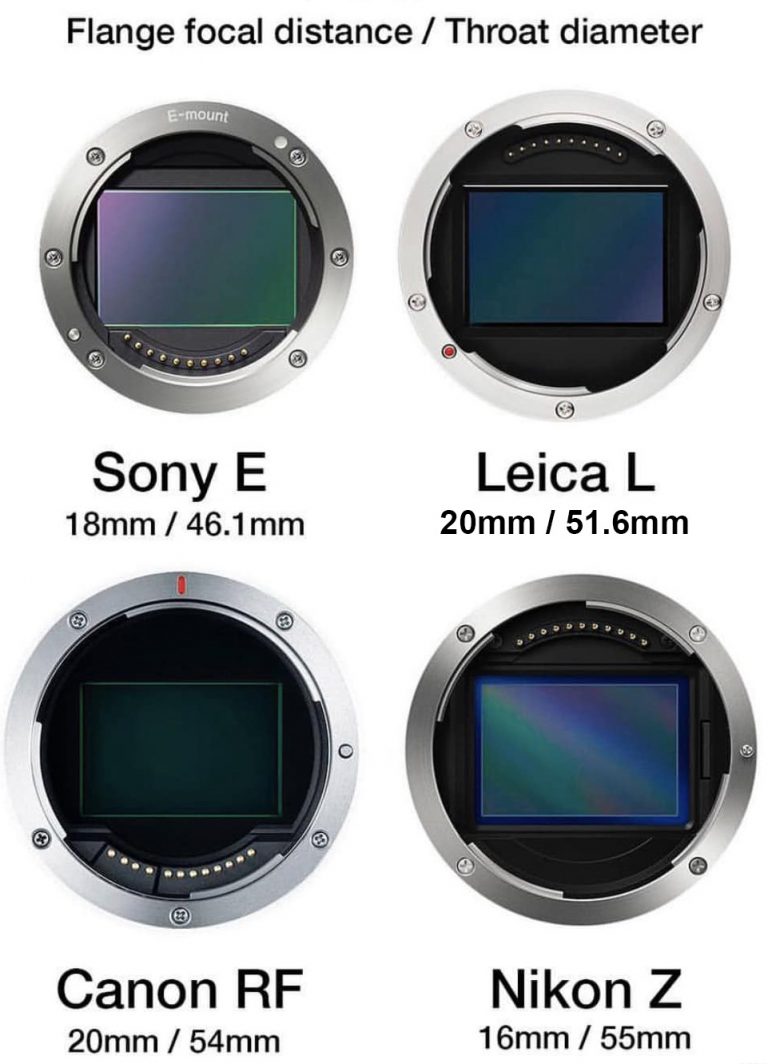
Let’s check it out now, which camera company have the biggest Fullframe mount in industry right now. As you can see that Nikon features the biggest 55mm Mount in industry with shortest flange distance to gain the highest quality possible and at the same time at second position we have Canon RF with 54mm lens diameter with 20mm flange distance, well before the arrival of Leica Canon was having the longest flange distance, but now its a tie.
Now after Canon RF, we have Leica L Mount that that features 51.6mm lens diameter and at the end we have Sony E-Mount with 46.1mm lens diameter. Having a large mount will sure help these camera makers to develop high quality lenses for their camera systems.
So which one is your fav Mirrorless mount among these 4 options, do share you thoughts with us.
Follow us on our social pages FACEBOOK | TWITTER | INSTAGRAM Or subscribe us via Email or Push Notification You Can also Download our Android App







Canon selling old car models to us… If we have to buy new lenses then it’s better to get the Sony A7III camera
Not the size matters really, but precision and sturdiness matters the most
The only mount I know is the Sony. Due to its dimensions and its 6 coupling screws, it is the most robust and safe to work with tele-lenses. The most fragile evidently the Nikon.
What do I miss the shutter box of the Sony ??. Some protector of the sensor type Eos R that is activated when turning off the camera, that would avoid us to be aware of it constantly
La única montura que conozco es la Sony. Por sus dimensiones y sus 6 tornillos de acople la convierten en la más robusta y segura para trabajar con tele-objetivos. La más frágil evidentemente la Nikon.
Que le echo de menos a la caja del obturador de la Sony??. Algún protector del sensor tipo Eos R que se acciona al apagar la cámara, que nos evitaría estar pendientes de él constantemente.
Purtroppo come spesso avviene, la conoscenza è sempre lontana dalla verità!
1° la dimensione conta come assoluto per importanza! Perché A) consente che l’ultima lente dell’obbiettivo sia più grande, permettendo il passaggio di maggiore quantità di luce per il sensore. B)Permette di realizzare sensori di dimensione maggiore, senza bisogno di cambiare nuovamente la baionetta di attacco (Rispetto per i clienti che hanno già acquistato. Nikon è l’unica che finn’oggi dalla sua nascita ha cambiato solo adesso baionetta, dovendo cambiare completamente le tecnologie per il futuro della fotografia Mirrorless!
2° La robustezza non si basa sul numero di viti, semmai sullo spessore della flangia di attacco e sul braccio di leva che si applica su questa! Più è grande il diametro, meno grande è il braccio di leva operato dal peso dell’ottica! Inoltre è importantissimo il posizionamento delle viti, non il numero. Nel caso di Nikon, ogni vite è posizionata sul posto dove si opera lo sforzo principale nell’innesto dell’ottica!
Riflettere prima di emettere sentenze!
Of course, Nikon with widest diameter and lowest distance is the most flexible… although short distance can present some issues (angle to the sensor).
Sony the first entrant is obviously the lesser proposition although the 18mm goes some way towards mitigating compared to Canon/Leica…although not nearly enough.
Anyway, will only be really useful for extreme opened and expensive lenses… with marginal impact.. but clear enough Nikon wins the race as “qui peut le plus peut le moins.
Given Sony 400 mm f2.8 performance (for instance)… I would not lose too much sleep.